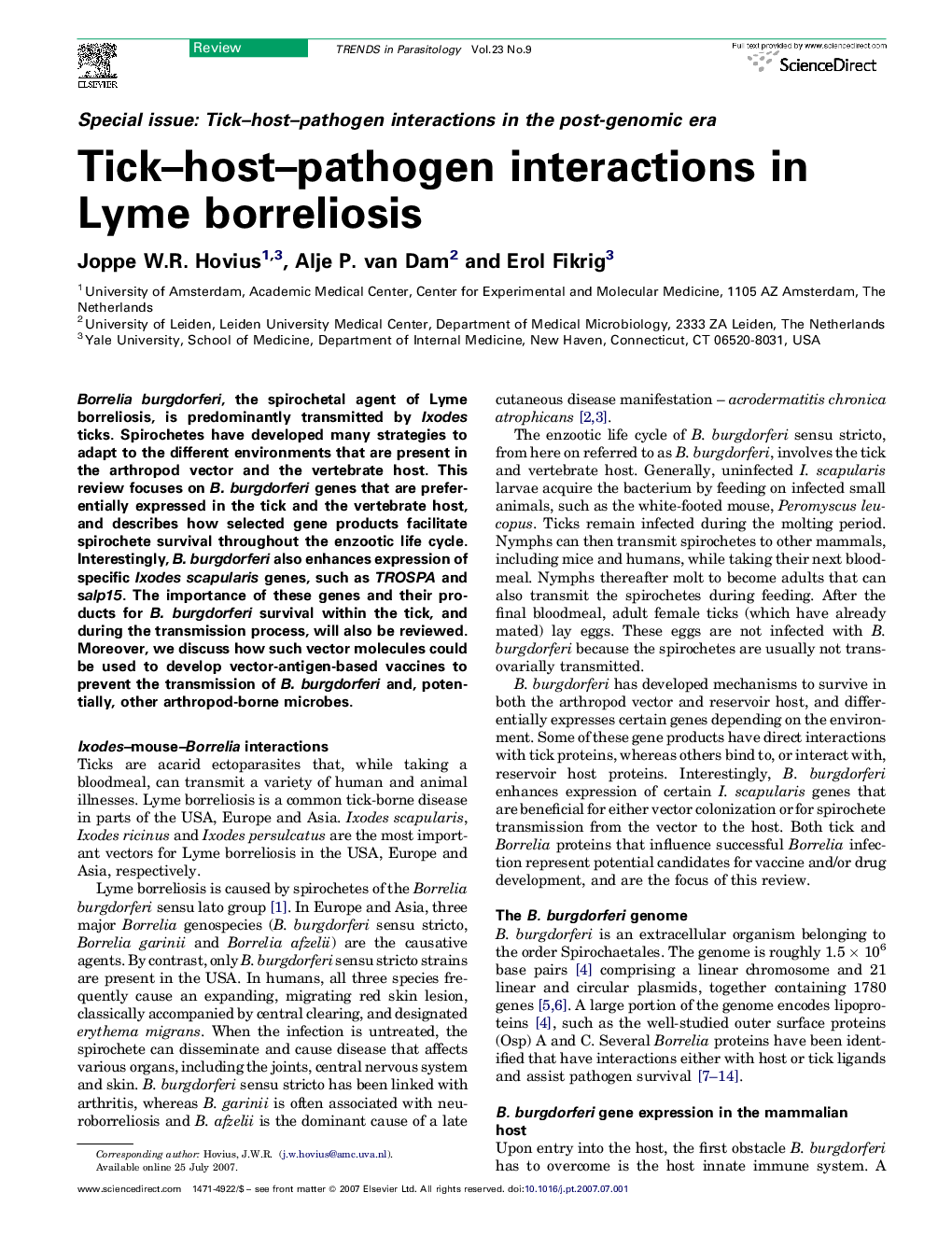| Article ID | Journal | Published Year | Pages | File Type |
|---|---|---|---|---|
| 3423968 | Trends in Parasitology | 2007 | 5 Pages |
Borrelia burgdorferi, the spirochetal agent of Lyme borreliosis, is predominantly transmitted by Ixodes ticks. Spirochetes have developed many strategies to adapt to the different environments that are present in the arthropod vector and the vertebrate host. This review focuses on B. burgdorferi genes that are preferentially expressed in the tick and the vertebrate host, and describes how selected gene products facilitate spirochete survival throughout the enzootic life cycle. Interestingly, B. burgdorferi also enhances expression of specific Ixodes scapularis genes, such as TROSPA and salp15. The importance of these genes and their products for B. burgdorferi survival within the tick, and during the transmission process, will also be reviewed. Moreover, we discuss how such vector molecules could be used to develop vector-antigen-based vaccines to prevent the transmission of B. burgdorferi and, potentially, other arthropod-borne microbes.
